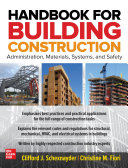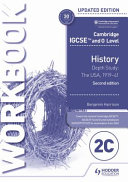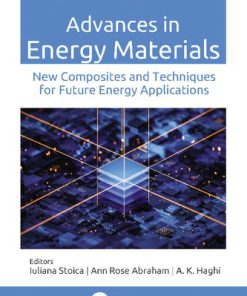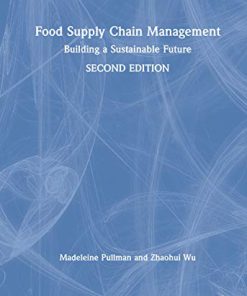Construction Materials Methods and Techniques Building for a Sustainable Future 5th Edition by Eva Kultermann, William P Spence ISBN 9780357513835 0357513835
$50.00 Original price was: $50.00.$25.00Current price is: $25.00.
Construction Materials Methods and Techniques Building for a Sustainable Future 5th Edition by Eva Kultermann, William P Spence – Ebook PDF Instant Download/Delivery: 9780357513835 ,0357513835
Full download Construction Materials Methods and Techniques Building for a Sustainable Future 5th Edition after payment
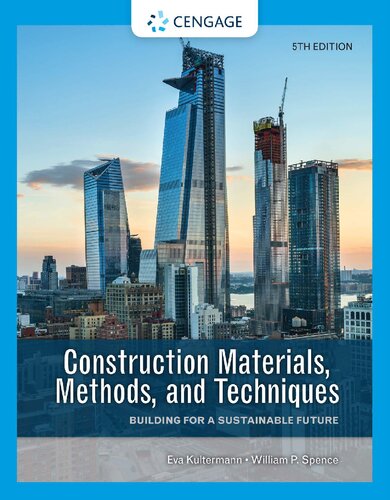
Product details:
ISBN 10: 0357513835
ISBN 13: 9780357513835
Author: Eva Kultermann, William P Spence
Construction Materials Methods and Techniques Building for a Sustainable Future 5th Edition Table of contents:
Part I. Introduction
Division 00: Procurement and Contracting Requirements CSI MasterFormat®
Division 01: General Requirements
Chapter 1. The Construction Industry: An Overview
Construction: A Dynamic Industry
Pre-Construction Activities
Pre-Design and Design Development
Building Information Modeling
Construction Documents
Specifications and the MasterFormat
The Project Delivery Process
Construction Contractors
Selecting the Contractor
Project Delivery Methods and Types of Construction Contracts
Design-Bid-Build
Design-Build
Construction Management (CM)
Integrated Project Delivery
Lean Construction
Public-Private Partnership (PPP)
The Construction Process
Construction Scheduling
Permitting
Pre-Construction Planning and Temporary Facilities
Shop Drawings, Submittals, and Mock-Ups
Construction Observation
Contractor Requests for Information (RFI)
Modifications to the Construction Contract
Project Close Out
Construction Safety
Review Questions
Key Terms
Activities
Additional Resources
Chapter 2. Regulatory Constraints, Standards, and Green Building Rating Systems
The Regulatory Environment—Zoning and Codes
Zoning Ordinances
Building Codes
The Development of Building Codes
The International Residential Code
The International Building Code (IBC)
Organization and Content of the International Building Code
Americans with Disabilities Act (ADA)/Universal Design
Standard Development Organizations
National Institute of Building Sciences (NIBS)
International Organization for Standardization (ISO)
American National Standards Institute (ANSI)
ASTM International
Underwriters Laboratories Inc. (UL)
American Society of Heating, Refrigerating and Air-Conditioning Engineers (ASHRAE)
National Association of Home Builders of the United States (NAHB)
Trade Associations
American Concrete Institute (ACI)
Portland Cement Association (PCA)
The Masonry Institute of America
American Institute of Steel Construction (AISC)
American Wood Council (AWC)
Sustainable Design and Green Building Rating Systems
The Environmental Impact of the Construction Industry
Sustainable Construction
Sustainable Design
Sustainable Building Certification Systems
The U.S. Green Building Council (USGBC) and LEED Rating System
LEED NC Version 4
Green Globes
NAHB National Green Building Program™
Energy Star
Other Assessment and Certification Programs
Review Questions
Key Terms
Activities
Additional Resources
Part II. Site Construction and Earthwork
Chapter 3. Properties of Materials
Material Groups
Material Properties
Mechanical Properties
Thermal Properties
Acoustical Properties
Chemical Properties
Environmentally Preferable Products (EPPS)
Embodied Energy
Natural Resources/Habitat Degradation
Renewable Materials
Recycled and Post-Consumer/Post-Industrial/Agricultural Materials
Toxicity to the Environment
Sustainable Construction Materials Assessment Criteria
Review Questions
Key Terms
Activities
Additional Resources
Division 02: Existing Conditions CSI MasterFormat
Division 31: Earthwork CSI MasterFormat
Chapter 4. The Building Site
Site Assessment
Land Surveying
Environmental Assessment
Subsurface Investigation
Site Plans
Site Work Activities
Sedimentation and Erosion Control
Storm-Water Drainage
Demolition
Site Remediation
Earthwork
Grading
Excavation
Sheeting
Cofferdams and Caissons
Dewatering Techniques
Underpinning Techniques
Paving
Asphalt Paving
Concrete Paving
Unit Paving
Seismic Considerations
Review Questions
Key Terms
Activities
Additional Resources
Chapter 5. Soils
Types of Soils
Soil Classification
Unified Soil Classification System
American Association of State Highway and Transportation Officials System
Subsurface Soil Testing
Field Classification of Soil
Testing for Soil Coarseness
Dry Strength Test
Toughness Test
Shaking Test
Soil Volume Characteristics
Soil Water
Soil-Bearing Capacities
Soil Alterations
Compaction
Soil Stabilization with Admixtures
Review Questions
Key Terms
Activities
Additional Resources
Chapter 6. Foundations
Foundation Design
Foundation Types
Shallow Foundations
Spread Footings
Slab and Raft Foundations
Deep Foundations
Displacement Piles
Methods of Driving Displacement Piles
Non-Displacement Piles
Geopier Foundations
Review Questions
Key Terms
Activities
Additional Resources
Part III. Concrete and Masonry
Division 03: Concrete CSI MasterFormat
Chapter 7. Concrete
Portland Cement
ASTM-Designated Types of Portland Cement
Properties of Portland Cement
Storing Portland Cement
Water
Aggregates
Characteristics of Aggregates
Grading Aggregates
Structural Lightweight Aggregates
Insulating Lightweight Aggregates
Heavyweight Aggregates
Testing Aggregates for Impurities
Handling and Storing Aggregates
Admixtures
Air-Entraining Agents
Retarders
Water Reducers
Accelerators
Pozzolans
Workability Agents
Superplasticizers
Permeability-Reducing and Damp Proofing Agents
Bonding Agents
Coloring Agents
Hardeners
Grouting Agents
Gas-Forming Agents
Basics of Concrete
Water–Cement Ratio
Minimum Cement Content
Aggregates
Entrained Air
Slump
Concrete Design
Normal-Weight Concrete
Lightweight Insulating Concrete
Lightweight Structural Concrete
Heavyweight Structural Concrete
Concrete Tests
Tests with Fresh Concrete
Tests with Hardened Concrete
Nondestructive Tests
Emerging Trends in Concrete
Review Questions
Key Terms
Activities
Additional Resources
Chapter 8. Cast-in-Place Concrete
Building Codes
Preparing Concrete
Batching
Mixing
Stationary Mixing
Ready-Mix Concrete
Remixing
Transporting, Handling, and Placing Concrete
Moving Concrete
Placing Concrete
Placing Concrete in Cold Weather
Placing Concrete in Hot Weather
Pneumatic Placement
Finishing Concrete
Curing Concrete
Formwork
Concrete Reinforcing Materials
Steel Reinforcing Bars
Welded Wire Reinforcement
Fiber Reinforcement
Cast-In-Place Concrete Elements
Casting On-Grade Slabs
Cast-in-Place Reinforced Concrete Walls
Reinforcing Cast-in-Place Beams
Reinforcing Cast-in-Place Columns
Cast-In-Place Concrete Framing Systems
General Construction Procedures
One-Way Flat Slab Floor and Roof Construction
Two-Way Flat Slab Floor and Roof Construction
Tilt-Up Wall Construction
Lift-Slab Construction
Slip Forming
Review Questions
Key Terms
Activities
Additional Resources
Chapter 9. Precast Concrete
Advantages of Precast Concrete Units
Building Codes
Pre-Stressing Precast Concrete
Pre-Tensioned Units
Post-Tensioned Units
Precast Concrete Elements
Precast Concrete Slabs
Precast Concrete Columns
Beams and Girders
Precast Concrete Wall Panels
Connecting Precast Units
Types of Connections
Grout, Mortar, and Drypack
Connection Details
Erecting Precast Concrete
Construction Planning
Transporting Units to the Site
Erecting Precast Concrete
Review Questions
Key Terms
Activities
Additional Resources
Division 04: Masonry CSI MasterFormat
Chapter 10. Mortars for Masonry Walls
Mortar Composition
Cementitious Materials
Masonry Cements
Other Mortar Ingredients
Types of Mortar
Sources of Mortar
Properties of Plastic Mortar
Workability
Water Retention
Properties of Hardened Mortar
Bond Strength
Durability
Compressive Strength
Low Volume Change
Appearance
Rate of Hardening
Colored Mortar
Mortar in Cold Weather
Surface-Bonding Mortars
Review Questions
Key Terms
Activities
Additional Resources
Chapter 11. Clay Masonry
Clays
Manufacturing Clay Bricks
Winning and Storage
Forming the Bricks
Drying
Glazing
Burning and Cooling
Drawing and Storage
Clay Masonry Units
Solid Masonry
Brick Pavers
Firebrick
Thin Brick
Hollow Masonry
Material Specifications for Clay Masonry
Weathering Index
Grades, Types, and Classes
Properties of Clay Brick and Tile
Compressive Strength
Durability
Absorption
Color
Texture
Heat Transmission
Fire Resistance
Other Fired Clay Products
Architectural Terra-Cotta and Ceramic Veneer
Review Questions
Key Terms
Activities
Additional Resources
Chapter 12. Concrete Masonry
Manufacture of Concrete Masonry Units
Physical Properties of Concrete Masonry Units
Types of Concrete Masonry Units
Modular Size Blocks
Concrete Brick
Slump Block
Concrete Block
Concrete Retaining Walls
Autoclaved Aerated Concrete Block (AAC)
Material Specifications
Grades
Types
Weights
Review Questions
Key Terms
Activities
Additional Resources
Chapter 13. Stone
Basic Classifications of Rock
Igneous Rock
Sedimentary Rock
Metamorphic Rock
Types and Uses of Stone
Quarrying and Producing Natural Stone
Choosing Stone
Manufactured Stone
Stone Composite Panels
Review Questions
Key Terms
Activities
Additional Resources
Chapter 14. Masonry Construction
Masonry Walls
Masonry Unit Positions
Masonry Bond Patterns
Laying Brick Masonry Walls
Mortar Joints
Laying Concrete Masonry Walls
Openings in Masonry Walls
Control and Expansion Joints
Types of Masonry Walls
Reinforced Masonry
Masonry Composite Walls
Masonry Cavity Walls
Insulated Masonry Cavity Walls
Masonry Veneer
Brick Masonry Columns
Masonry Construction Details
Stone Masonry Construction
Structural Clay Tile Construction
Laying Structural Clay Tile Walls
Estimating Masonry Materials
Review Questions
Key Terms
Activities
Additional Resources
Part IV. Metals, Wood, and Plastics
Division 05: Metals CSI MasterFormat
Chapter 15. Ferrous Metals
Iron
Mining and Processing Iron Ore
Producing Iron from Iron Ore
Cast Irons
Steelmaking
Basic Oxygen Process
Electric Steelmaking Processes
Manufacturing Steel Products
Steel Recycling
Steel Identification Systems
The Unified Numbering System for Metals and Alloys
Steel and Steel Alloys
Plain Carbon Steels
Alloy Steels
Types of Structural Steel
Stainless and Heat-Resisting Steels
Steel Products
Structural Steel Products
Sheet Steel Products
Other Products
Testing Metals
Review Questions
Key Terms
Activities
Additional Resources
Chapter 16. Nonferrous Metals
Aluminum
Mining Aluminum
Refining Bauxite Ore
The Bayer Process
The Hall–Héroult Electrolytic Process
Aluminum Alloys
UNS Designations
Temper Designations
Aluminum Castings
Aluminum Finishes
Natural Finishes
Mechanical Finishes
Chemical Finishes
Anodic Finishes
Coatings
Protecting a Finished Aluminum Product
Routine Maintenance of Aluminum Surfaces
Joining Aluminum Members
Aluminum Products
Copper
History of Copper
Properties of Copper
Production of Copper
Classifying Copper and Copper Alloys
Copper Alloys
Copper Alloy Finishes
Care of Copper and Copper Alloys
Uses of Copper
Brass
History of Brass
Plain Brasses (Copper-Zinc Alloys)
Leaded Brasses (Copper-Zinc-Lead Alloys)
Tin Brasses (Copper-Zinc-Tin Alloys)
Bronze
Lead
History of Lead
Properties of Lead
Production of Lead
Grades of Lead
Lead Alloys
UNS Designations
Uses of Lead
Solders
Properties
Types of Solder
Fluxes
Tin
Properties and Working Characteristics of Tin
Production of Tin
UNS Designations
Uses of Tin
Terneplate
Uses of Terneplate
Production of Terne Sheets
Titanium
History
Properties
Working Characteristics
Production of Titanium
Titanium Alloys
UNS Designations
Uses of Titanium
Nickel
History
Properties
Working Characteristics
Production of Nickel
Nickel Alloys
UNS Designations
Uses of Nickel
Zinc
Properties
Working Characteristics
Production of Zinc
Zinc Alloys
UNS Designations
Uses of Zinc
Zinc Galvanizing Processes
Galvanic Corrosion
Review Questions
Key Terms
Activities
Additional Resources
Chapter 17. Steel Frame Construction
Structural Steel Drawings
The Steel Frame
Frame Stability
Steel Frame Connections
Simple Connections
Moment Connections
Riveted Connections
Bolted Connections
Welded Connections
The Erection Process
Decking
Metal Decking
Concrete Decking
Pre-Engineered Metal Building Systems
Other Steel Construction Systems
Light-Gauge Steel Framing
Fire Protection of the Steel Frame
Review Questions
Key Terms
Activities
Additional Resources
Division 06: Wood, Plastics, and Composites CSI MasterFormat
Chapter 18. Wood, Plastics, and Composites
Tree Species
Softwoods
Hardwoods
The Structure of Wood
Wood Defects
Lumber Manufacturing
Seasoning Lumber
Air-Dried Lumber
Kiln-Dried Lumber
Dehumidification and Solar Kilns
Unseasoned Lumber
Lumber Sizes
Softwood Lumber
Hardwood Lumber
Buying Lumber
Lumber Grading and Testing
Lumber Grades
Lumber Classifications as to Manufacture
Size Classifications
Stress-Rated Lumber
In-Grade Testing Program
Physical and Chemical Composition of Wood
Porosity of Wood
Composition of Wood
Hygroscopic Properties of Wood
Moisture Content
Fiber Saturation Point
Equilibrium Moisture Content
How Moisture Affects Wood Properties
Specific Gravity
Structural Properties of Wood
Bending
Shear
Modulus of Elasticity
Tension
Compression
Gluing Properties
Other Properties of Wood
Thermal Properties
Decorative Features
Decay Resistance
Insect Damage
Pressure-Treated Wood and Plywood
Safety Information
Chromated Copper Arsenate (CCA)
Alkaline Copper Quat (ACQ)
Bardac-Treated Wood
Copper Azole (CA)
Pentachlorophenol
Methyl Isothiocyanate
Applying Preservatives
Effect of Treatment on Strength
Quality Certification
Fire-Retardant Treatments
Review Questions
Key Terms
Activities
Additional Resources
Chapter 19. Products Manufactured from Wood
Plywood and Other Panel Products
Plywood Panel Construction
Specifications for Plywood Panels
Construction and Industrial Plywood
APA Performance-Rated Panels
Specialty Plywood
Hardwood Plywood
Reconstituted Wood Products
Structural Building Components
Other Products Manufactured from Wood
Review Questions
Key Terms
Activities
Additional Resources
Chapter 20. Wood and Metal Light Frame Construction
Wood Framing and the Building Codes
Building Codes
Preparing the Site
Excavation
Foundations for Light Wood Frame Construction
Wood Foundations
Interior Piers and Columns
Evolution of Light Wood Frame Construction
Platform Framing
Floor Framing
Wall Framing
Ceiling Framing
Framing the Roof
Wood Trusses
Wood Roof Trusses
Wood Floor Trusses
Pre-Manufactured Wood Construction
Fasteners for Wood Frame Construction
Nails
Wood Connectors
Light-Gauge Steel Framing
Review Questions
Key Terms
Activities
Additional Resources
People also search for Construction Materials Methods and Techniques Building for a Sustainable Future 5th Edition:
construction materials methods and techniques 4th edition spence and kultermann
construction materials methods and techniques 4th edition pdf
construction materials methods and techniques 5th edition pdf free download
construction materials methods and techniques 4th edition pdf free download
construction materials methods and techniques building for a sustainable future
Tags: Eva Kultermann, William P Spence, Construction Materials, Sustainable Future
You may also like…
Engineering - Construction & Building Trades
Engineering - Civil & Structural Engineering
Education Studies & Teaching - Studying & Test Preparation
Technique - Construction
Construction Materials Methods and Techniques 4th Edition William P Spence Eva Kultermann
Technique - Construction
Sustainable Building Systems and Construction for Designers 3rd Edition Lisa M. Tucker
Engineering - Energy & Power Resources





